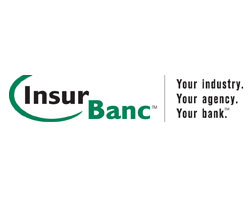

Agents and banks: New best friends
Agents give InsurBanc high fives
Phil Zinkewicz
 |
 |
In April 2001, the Independent Insurance Agents and Brokers of America (IIABA) and W.R. Berkley Corp. officially opened InsurBanc, a full-service federal savings bank that the IIABA said would eventually “enable consumers to access financial products through their local independent agent.” The new bank would provide an array of products such as auto loans, credit cards, home equity loans, mortgages, certificates of deposit and money market funds, said the IIABA. At the time of the bank’s opening, William R. Berkley, chairman and CEO of W.R. Berkley, had this to say: “The ability of independent agents to be a resource for additional financial services to their customers will be a benefit to both. We believe that InsurBanc and independent agents are going to be the best choice for consumers seeking access to financial services products from someone who is truly interested in their needs.”
It wasn’t so very long before the opening of InsurBanc, perhaps a decade or so ago, that the insurance industry—agents in particular—was trying very hard to keep banks out of the insurance business. The argument was that, because of their lending services, banks might be able to unfairly influence their banking customers to buy insurance products from them rather than from insurers or their independent agents. But when the Gramm-Leach-Bliley Act was passed in 1999, it became fairly clear that boundaries between banks, insurers and investment firms would soon be breaking down. Then, of course, there was the Barnett decision, which was the real trigger for InsurBanc.
“We decided to fight fire with fire,” says Rick Davis, president of the Provident Insurance Group, Needham, Massachusetts, and chairman of the board of InsurBanc. “Credit is a tremendous driver for other types of sales. It’s also a relationship builder. When we first started up, the long-term goal was to become a bank for our agents’ clients. To realize that goal, however, we knew we had to proceed on a step-by-step basis. First, we decided to establish a cadre of agents as our customer base. And that’s what we’ve been doing these past years.”
Here are examples. “We’ve completed two loan transactions that were perpetuation based,” says Joe B. Smith of Smith Brothers Insurance, Inc., in Glastonbury, Connecticut. “We completed a letter-of-credit arrangement with InsurBanc, and most recently we switched all of our agency accounts from our local bank to InsurBanc. Why? InsurBanc understands the agency business and how it’s valued, so they can be more flexible in providing financial services to agents. When InsurBanc opens its doors to our clients, we can say, ‘We bank there too.’”
Says Steven Shulman of the Needham, Massachusetts-based Rodman Insurance Agency: “We use InsurBanc for our checking account and as a borrowing facility. We have had borrowing arrangements with other banks, but we have found that InsurBanc’s rates and fees are lower than their competitors. For one thing, they don’t have a lot of overhead because they don’t have too many branches. There’s less brick and mortar and more electronic transactions. In addition, InsurBanc recognizes that our strength is not in our balance sheet, but in our client list. Other banks don’t understand this.”
Says Davis: “To sell InsurBanc’s financial products, going to our agency forces was a necessary first step towards reaching our ultimate goal. If I have an insurance client in my agency and I recommend InsurBanc for other financial services and that client asks whether I do business with InsurBanc, I’d better be able to say ‘yes’, or how can I convince my client to do business with the bank? So, far our transactions with agents have included loans for agency perpetuation and letters of credit, in addition to loans for equipment financing. And, for the first time since we began operations, we are profitable. So we are, let’s say, at one step and half towards our ultimate goal.”
Davis says that InsurBanc has $65 million in assets. It has lent out $42 million and has $39 million in deposits. In addition, IIABA and Berkley have decided to add another $10 million in capital for InsurBanc.
It is unlikely that InsurBanc will make a big push for agents’ clients this year, according to Davis. “Even though we’ve been profitable since August of last year, overall we show losses for all of 2004,” he says. “If we show profits for all of 2005, then we’ll pursue our ultimate goal of being a bank for all consumers.”
IIABA CEO Robert Rusbuldt is delighted that InsurBanc is doing well. “This bank was established to serve the needs of our agents and, eventually, their clients and I think we are well on our way towards reaching that goal,” he says. “Agents need access to loans for perpetuation, mergers and acquisitions, among other things. This is a bank for agents, run by agents. As opposed to other banks, when agents come to InsurBanc, they don’t have to explain what an expiration date is or what agency value is. At InsurBanc, agents are dealing with people who are professionals in their own business. The bank has experienced steady growth and turned a profit for the first time in August of last year. We have been profitable since then. And it is interesting to note that, since its inception, InsurBanc has not had one single loan delinquency. Agents know that this bank has been formed for them and their clients. I think we are poised for a major takeoff.”
InsurBanc is not the only insurance industry-run bank in operation. State Farm Bank, owned by State Farm Insurance, offers checking services, savings accounts, money markets, certificates of deposit, home mortgage loans, car loans and leases, home equity loans and home equity lines of credit. Other carriers, both direct writers and agency companies, have banks as well.
Also in the banking business is the National Association of Mutual Insurance Companies (NAMIC), which owns and operates Assurance Partners Bank. Products offered by Assurance Partners include first mortgage loans, home equity loans, credit cards, student loans, auto loans and personal unsecured loans.
Clearly, the days of trying to keep banks out of insurance are now long gone. Today the insurance industry is providing healthy compe-tition for the banking industry. As Davis says, the industry is “fighting fire with fire.” *